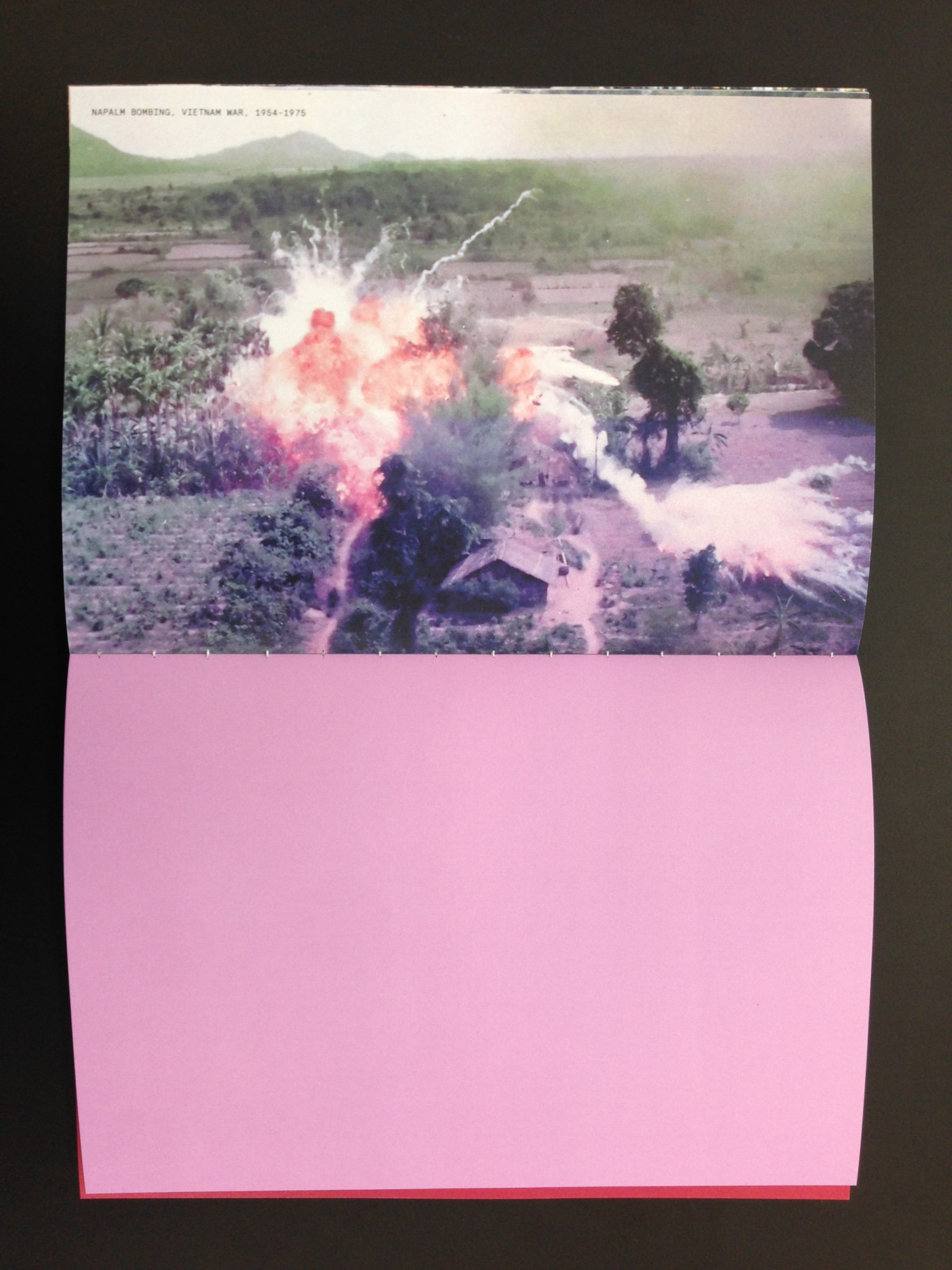The Catastrophe Colours 2018
Images of catastrophes disseminated by the media are etched into our visual memory with particular emphasis. Yet our brains don’t necessarily store concrete images but rather abstractions of the documented events – a diffuse colour spectrum. Architecture office Gonzalez Haase AAS took up this phenomenon and translated it into design guidelines: the architects developed the book Catastrophe Colours in 2014, a colour theory of the present, in which media images of catastrophes are confronted with their inherent chromatic essence. Thus Catastrophe Colours functions as a colour fan, no longer inspired by art as Le Corbusier’s Clavier des Couleurs but based on research, linkage, and storytelling – the basic components of our information society.
Architecture office June 14 Meyer-Grohbrügge & Chermayeff later adopted Catastrophe Colours in their design. For the exhibition they structured various catastrophe colours into new sets of colour; Middle East Conflict, Vietnam War, Cold War, Nuclear Disaster, Oil Spills and Terrorism. As clavier for polychromatic designs of interior spaces, specific colour fans can only be combined with specific others – given a political connection. Oil Spills can only be combined with Cold War, for example, but not with Nuclear Disasters. The achieved abstraction is instantly reintroduced into reality, the catastrophes regain their meaning, colour patterns transform into narratives. For the exhibition Gonzalez Haase AAS and June14 Meyer-Grohbrügge & Chermayeff present possible colour combinations as vivid sample sets: dark media reality in its most colourful similitude.
The exhibition is part of Stop making sense, it’s as good as it gets.: a program developed by Ludwig Engel and Joanna Kamm, derived from a close reading of Tom McCarthy’s novel Satin Island. The book deals with the impossibility to reach the present and the resulting inability to write the Great Report on our contemporary society. Following these thoughts, artists, writers, architects, theorists and scientists are invited to discuss their interpretations of time through different formats.
